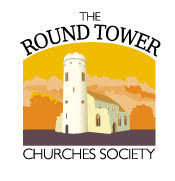An ancestor of one of the country’s influential poets, George Crabbe, was buried in the chancel of Blundeston church, writes Michael Pollitt.
His great-grandfather, William Sydnor became patron of St Mary’s in 1587. When he died in 1613, aged three score and ten, he was buried near the altar with his wife, Bridget. It is the oldest named memorial in the church and shows the arms of the Sydnor family impaled with those of Jernigan.
One of William’s grandsons, John, who died in 1699 and was buried in St Ethelreda’s, Norwich, had a daughter, Jane. She married William Crabbe in 1687 and their second son, Robert, was born in 1697.
He died in 1734 leaving a young son, George, who married and had six children. His eldest, also George, born on Christmas Eve 1754 became the poet. He went to school in Aldeburgh, then aged nine to boarding school in Bungay
Although his father wanted him to be a doctor/ surgeon, he was not particularly successful. But in London, in great financial difficulty, he wrote enclosing some of his poetry to Edmund Burke. He was so impressed that he paid many of Crabbe’s debts and introduced him to London’s literary circles.
Crabbe became chaplain to the Duke of Rutland, thanks to Burke’s recommendation. He became friends with literary giants including Sir Walter Scott and William Wordsworth. Lord Byron described him as “nature’s sternest painter, yet the best.”
With such aristocratic financial backing, Crabbe and Sarah Elmy were married in December 1783 at Beccles parish church. In 1792, the family came into possession of an estate in Parham, which ended their immediate financial They lived there for four years before moving to Great Glemham for five years before eventually moving to Rendham.
After the critical success of The Parish Register in 1807, he was encouraged to write a much longer poem. He had begun it in 1801 while living at Rendham. It was completed during a long visit to Aldeburgh in the autumn of 1809.
Published in February 1810, it was an immediate success and five further editions were printed in the next six years.
He spent the final quarter of his life at Trowbridge in Wiltshire before dying in February 1832 in the same year as his friend Sir Walter Scott.
Crabbe’s works include The Village (1783), Poems (1807), The Borough (1810), and his poetry collections Tales (1812) and Tales of the Hall (1819).
His best-known poem, The Borough, inspired the composer Benjamin Britten’s opera Peter Grimes, which was set in Aldeburgh.
Apologies for an incorrect headline in the December 2021 edition of The Round Tower. Blundeston church is, of coursd
Blundeston: More Village History. 206 pages, includes 40 pages of churchyard burials and records by Olwen Offord and Iris Mayes. Copies of Volume 2 can be obtained from Mrs May, Traddles, Pound Lane, Blundeston NR32 5AY. Price £10, including postage, payable to Blundeston PCC.
Blundeston bear updates
The successful Teddy Bear fund-raising event was reported in The Round Tower, September 2021), and photographed by Mick Howes.
Since 1996, when the first event was celebrity bears have made guest appearances. Richard Branson donated the first and others have been given by leading football clubs, including England. The famous maker, Steiff, of Germany, supported the event by putting one of their bears into training – and it was later launched from the tower.
To her surprise, Mrs Mayes said that Big Ted visited the church on a mission to every St Mary’s. Having heard about the Teddy Bear event in June, he intends to take part in 2022.
A craft fair at the church in October raised more than £1400 with the sale of “Russians” – a rug and cushion containing a fleece.
